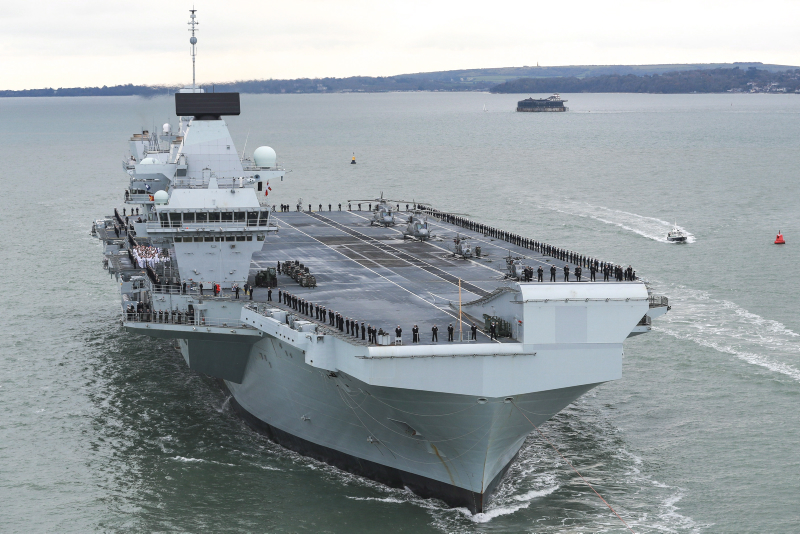@onUKDefence has previously identified the importance of insightful strategic direction, especially during a defence (or, in today’s lexicon, integrated) review, but recognised that it is not always forthcoming. On 19 October, Secretary of State for Defence Ben Wallace (Conservative MP for Wyre and Preston North) and Professor Dame Angela McLean, Chief Scientific Advisor to the MOD, launched a “bold new Science and Technology Strategy”. They claim it provides the direction necessary to put ground-breaking innovation at the heart of defence activity for generations. But will it? Or will the MOD’s new Science and Technology Strategy, like other similar initiatives that have gone before it, simply end up as a piece of quickly forgotten ‘shelf wear’?
What type of Strategy?
There was a time when the word strategy was synonymous with the planning and conduct of war. That is no longer the case. Sir Lawrence Freedman, Emeritus Professor of War Studies at King’s College London, wrote that “Doctors have clinical strategies, lawyers have prosecution strategies and social workers have counselling strategies. Individuals have their own strategies – for developing a career, coping with bereavement, filling in a tax return, or even potty training an infant or buying a car”. Similarly, Hew Strachan, Bishop Wardlaw Professor at the University of St Andrews, believes that “the word ‘strategy’ has acquired a universality which has robbed it of its meaning and left it only with banalities”. So, what exactly is the MOD’s new Science and Technology Strategy?
UK Doctrine confirms that military strategy directs the use of the military instrument where it has been identified by the government as part of a UK response to a specific challenge. Its aim is to ensure coherent and effective strategic planning when using the UK’s armed forces. Clearly the Science and Technology Strategy is not that. Above military strategy in the doctrinal lexicon sits defence strategy. It constitutes the overall Defence contribution to national strategy. Specifically, it translates the national strategy responsibilities allocated to Defence to more detailed outcomes and the outputs required to deliver them. A further function of defence strategy is to ensure that the UK maintains and sustains credible and capable military forces. It could be argued that the MOD’s Science and Technology Strategy plays a supporting role in this function.
Is it a Strategy?
In 2014, the House of Commons Defence Committee proposed that strategy be defined as “a course of action that integrates ends, ways and means to meet policy objectives”. In this context, the ‘ends’ are what needs to be achieved; the ‘ways’ are how this will be done; and the ‘means’ are the resources to be used to do it. This definition is now used and taught at the Royal College of Defence Studies, the MOD’s world-renowned institution committed to developing strategic thinkers and leaders.
In contrast, the MOD’s Science and Technology Strategy is a largely self-congratulatory offering that extols its own virtues through a series of case studies, most of which showcase Defence science and technology capabilities. To that end, the document’s primary focus appears to be more about justifying the existence of the Defence science and technology community, rather than offering a scientific and technological course of action that supports Defence policy.
That said, a deeper look beyond the buzzword-bingo suggests there may be some ends, ways and means structure to the strategy. In her forward, the Chief Scientific Advisor confirms that “Defence S&T endeavour must lay the foundations for the generation after next of military capability”. Broadly speaking, that is what needs to be achieved. Next, the backbone of the document is three sections: Understand the Future; Make the Right Decisions; and Seize the Opportunities. Although these are quite nebulous titles, the detail contained therein goes some way towards explaining how this will be done. Finally, the final section, titled Strategy Implementation and Monitoring our Progress, suggests some detail around available resources and the management of a plan. Unfortunately, it is heavy on monitoring and light on implementation. Short-, medium- and long-term milestones are clearly articulated; however, there is no explanation about what will actually be undertaken to achieve them.
Conclusion
The predecessor to the MOD’s latest Science and Technology Strategy was the Defence Technology Strategy, published in 2006. It ran to 192 pages and was probably read cover to cover by only the most dedicated members of the defence academic commentariat. At 35 pages, the new strategy is likely to attract a larger audience, and the timing of its release means it may have influence as Defence embarks on its post-Integrated Review journey towards the 2030s. However, even in its obvious supporting role to wider defence strategy, it has its deficiencies. It is hard to see a clear course of action that integrates science and technology ends ways and means into high-level defence policy objectives. In particular, the lack of detail on available resources is a major omission. Winston Churchill once said, “However beautiful the strategy, you should occasionally look at the results”. The MOD’s new Science and Technology Strategy isn’t beautiful, and its results will struggle to be so either. To that end, it is unlikely to be remembered for long.






